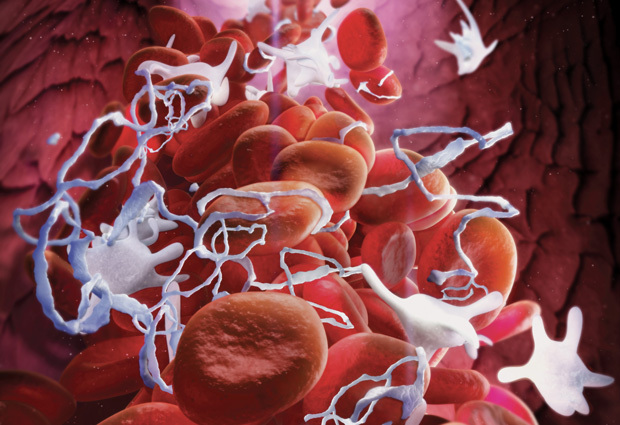
Thrombosis and Hemostasis
The blood coagulation system consists of an intricate set of reactions that protect the body from bleeding and thrombosis. In general, the system is well-balanced and excessive bleeding or runaway coagulation in an individual are not daily events, but the life-time risk of a single event is nevertheless high. In cases with profound inherited or acquired imbalances in the coagulation system (e.g. hemophilia, severe deficiencies of natural anticoagulants, auto-antibodies against coagulation proteins, lupus anticoagulants, severe acute infection, et cetera) it is relatively easy to understand the risk of bleeding or thrombosis. Much more difficult to understand is thrombosis or bleeding of a more episodic nature which occurs ‘out of the blue’ in otherwise healthy individuals. Research in the department of Thrombosis and Hemostasis firstly focuses on the discovery of environmental and genetic risk factors for venous thrombosis and bleeding. This is achieved mostly in clinically oriented studies including family studies and case-control studies of patients with bleeding or thrombosis. These studies are supported by fundamental studies of various aspects of coagulation with emphasis on cellular effects of activated clotting factors, and by experimental studies in genetically modified mice. These latter studies provide the mechanistical framework for the interpretation of the clinical studies eventually resulting not only in a better understanding of thrombosis and bleeding, but also in better tailored treatment and in new leads for drugs.
Research
- A novel cofactor-based procoagulant protein as bypassing agent for hemophilia
- Assembling the molecular machinery of coagulation: learning from the adaptive evolution of snake venom proteins
- Disease in a dish: Modelling Von Willebrand disease with patient-specific induced pluripotent stem cells
- Identification of novel inherited risk factors for venous thrombosis using NGS
- INCOAG: Whole-blood coagulation profile
- Lowering von Willebrand factor as a therapeutic approach to reduce the risk of thrombosis
- The Netherlands Epidemiology of Obesity study
- The role of coagulation factors in cancer and malignancy-associated thrombosis.


